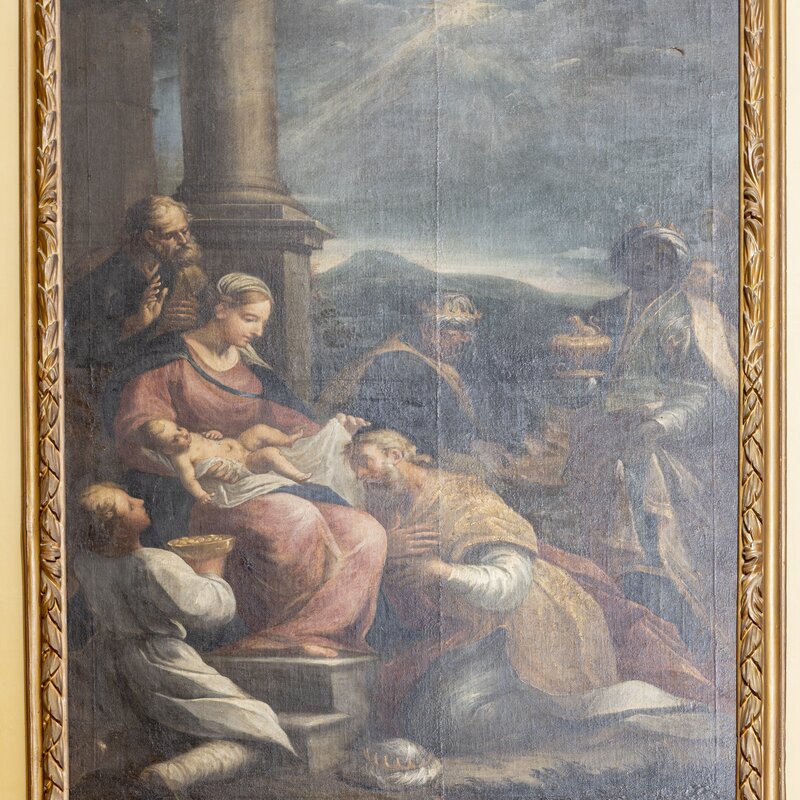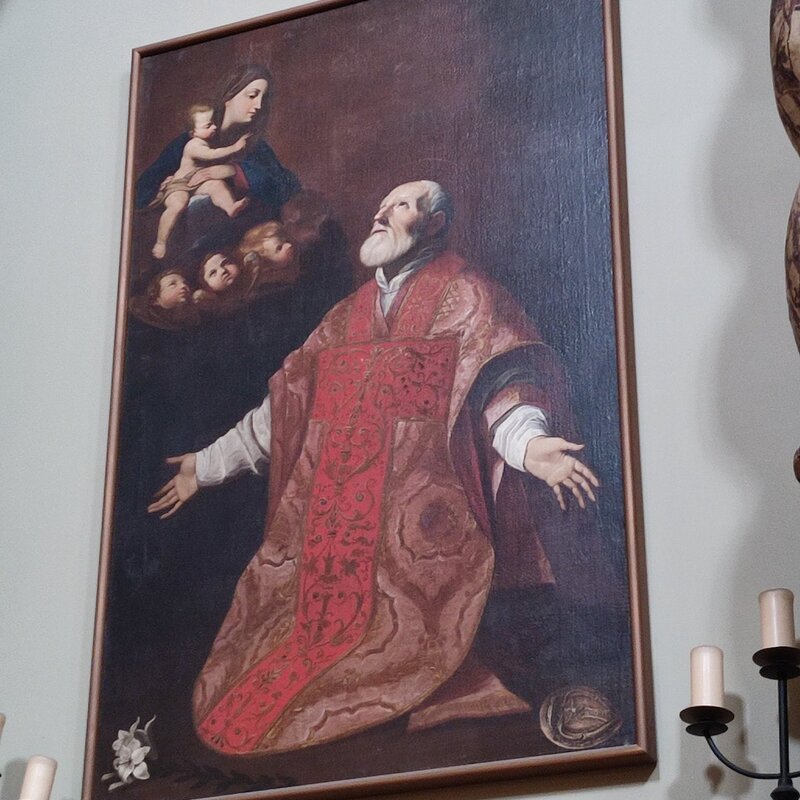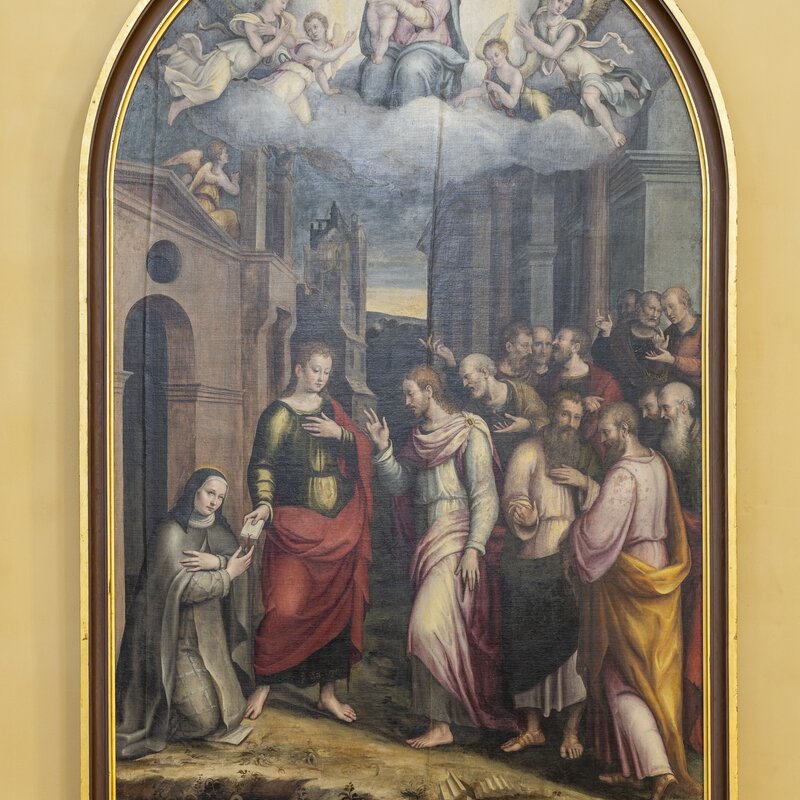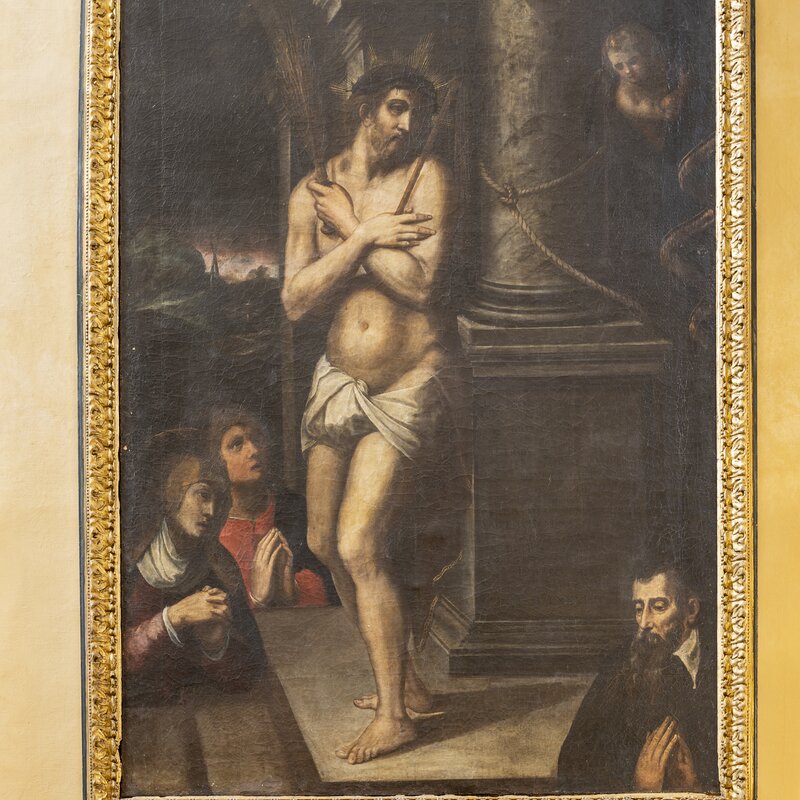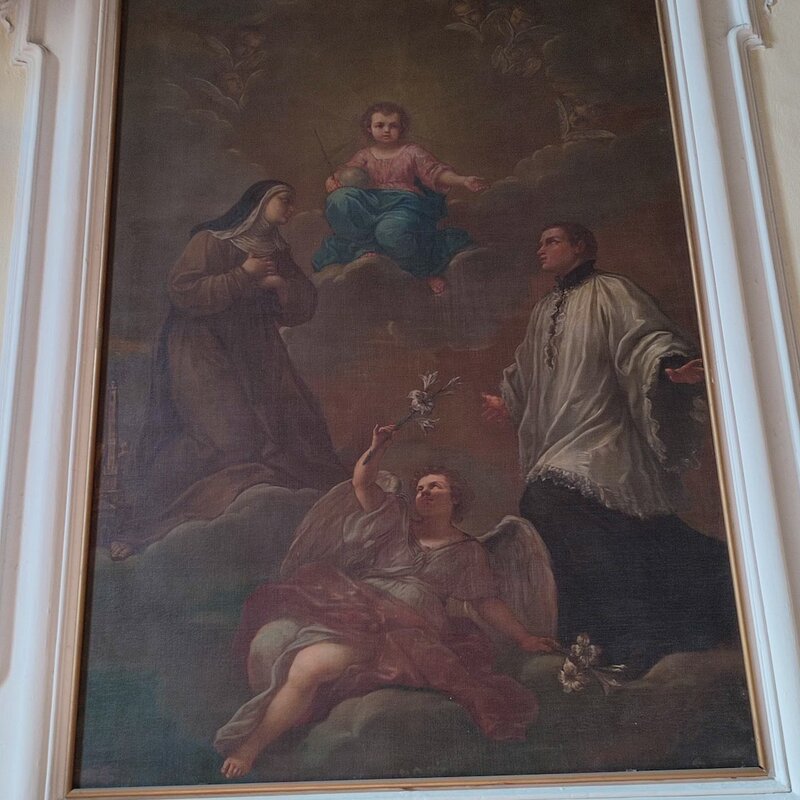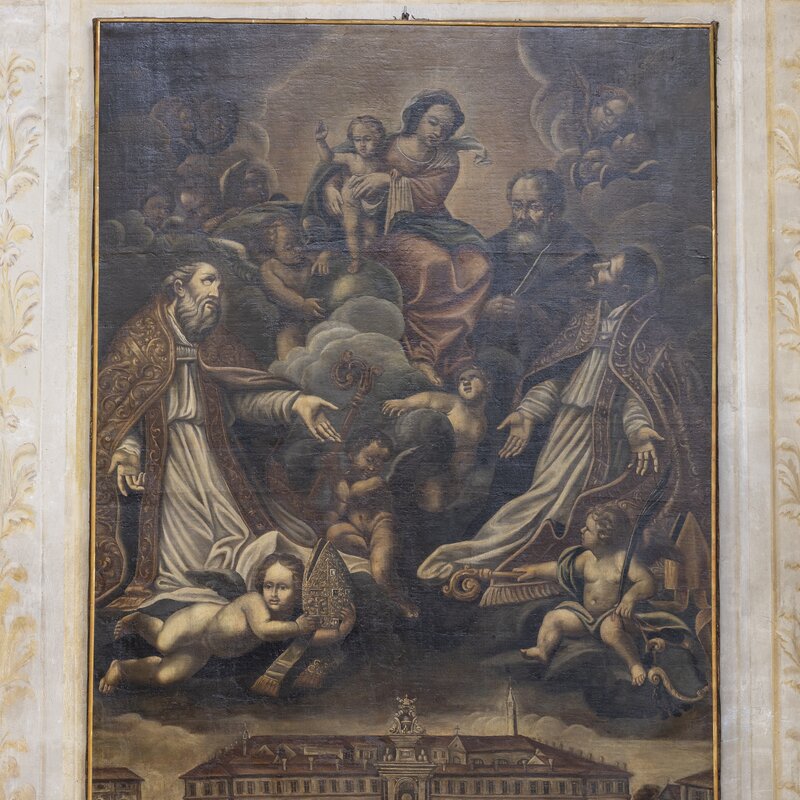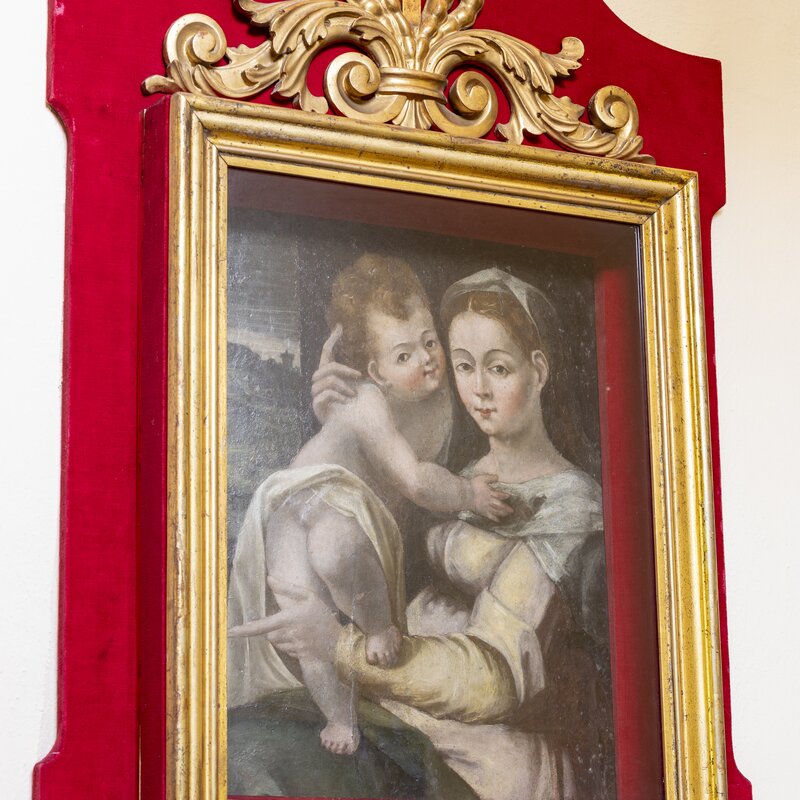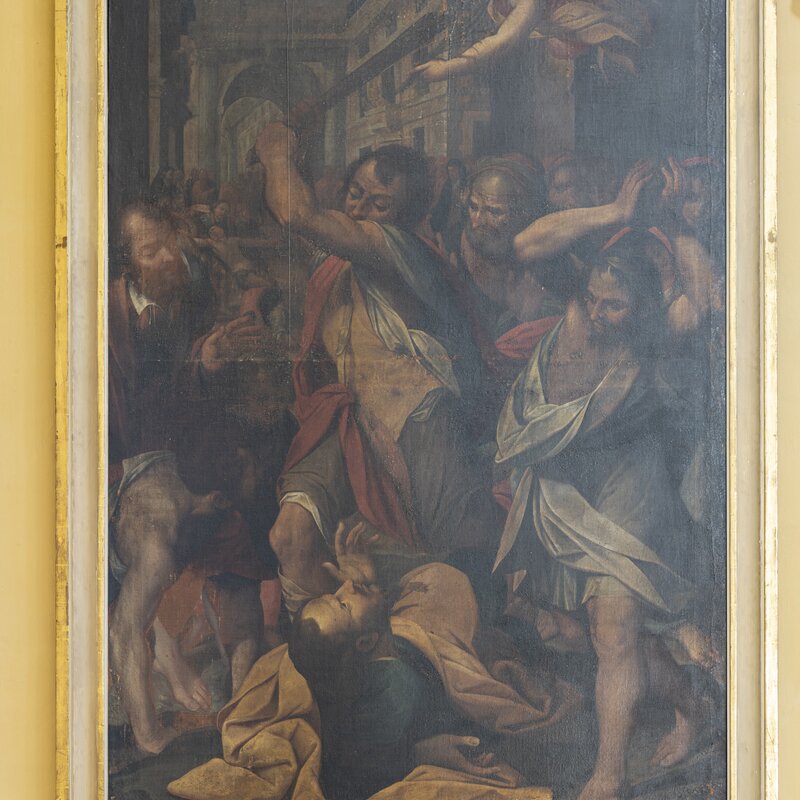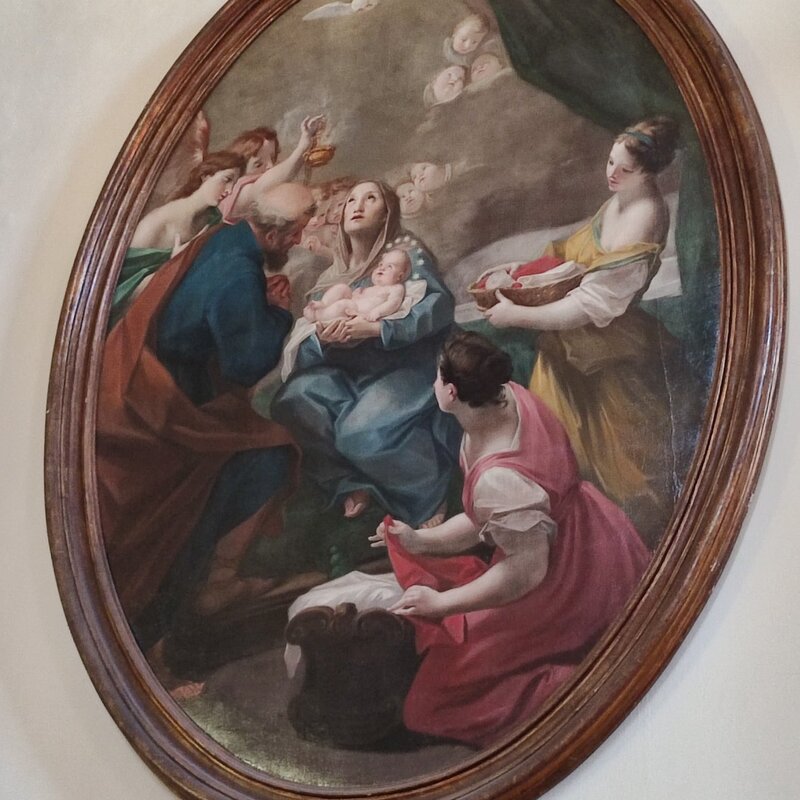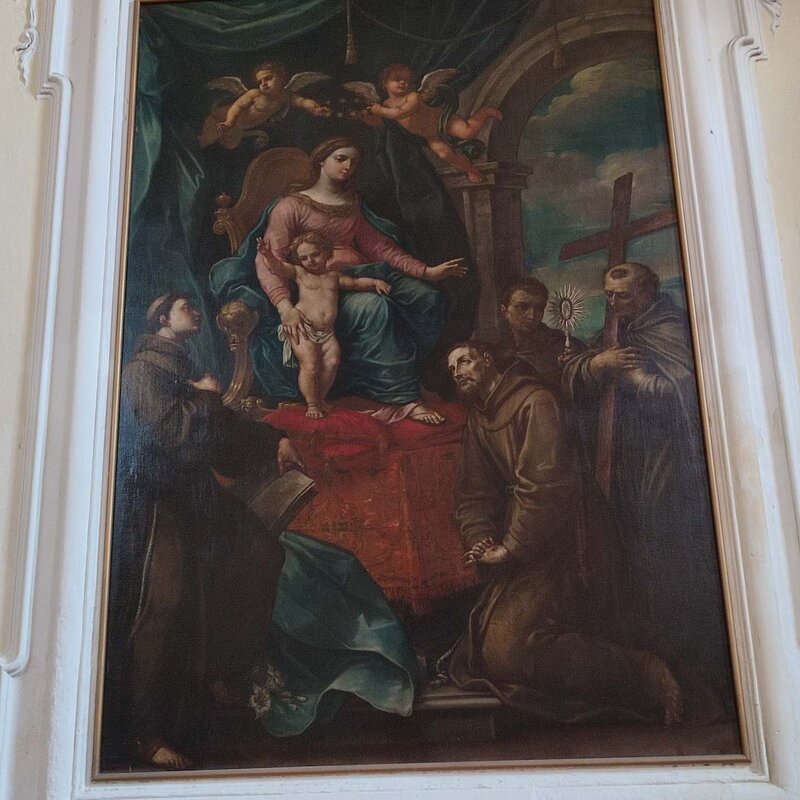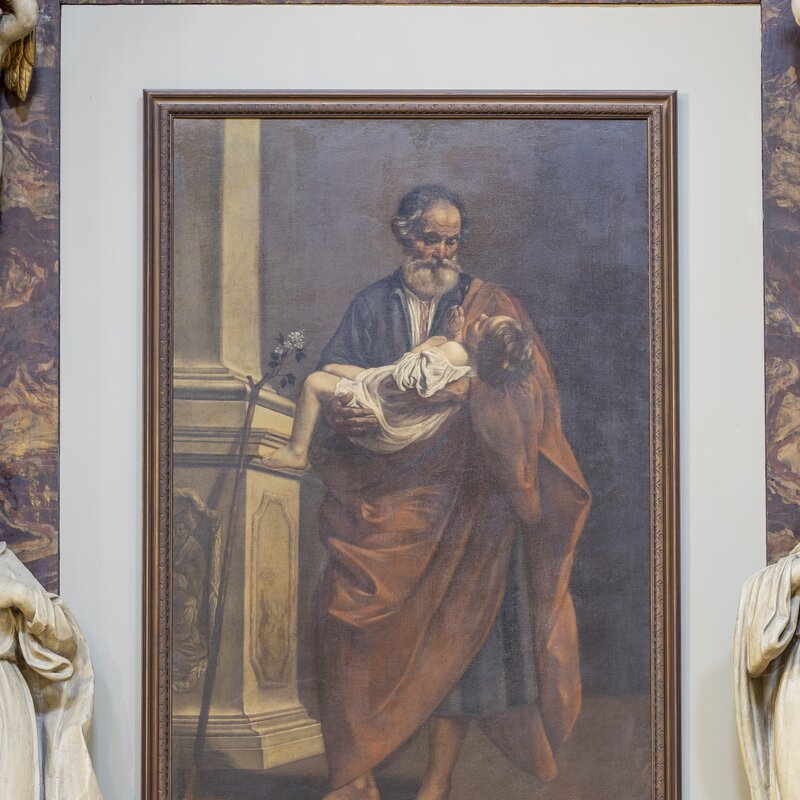The Virgin Mary with Saints Bartholomew and Nicholas of Bari
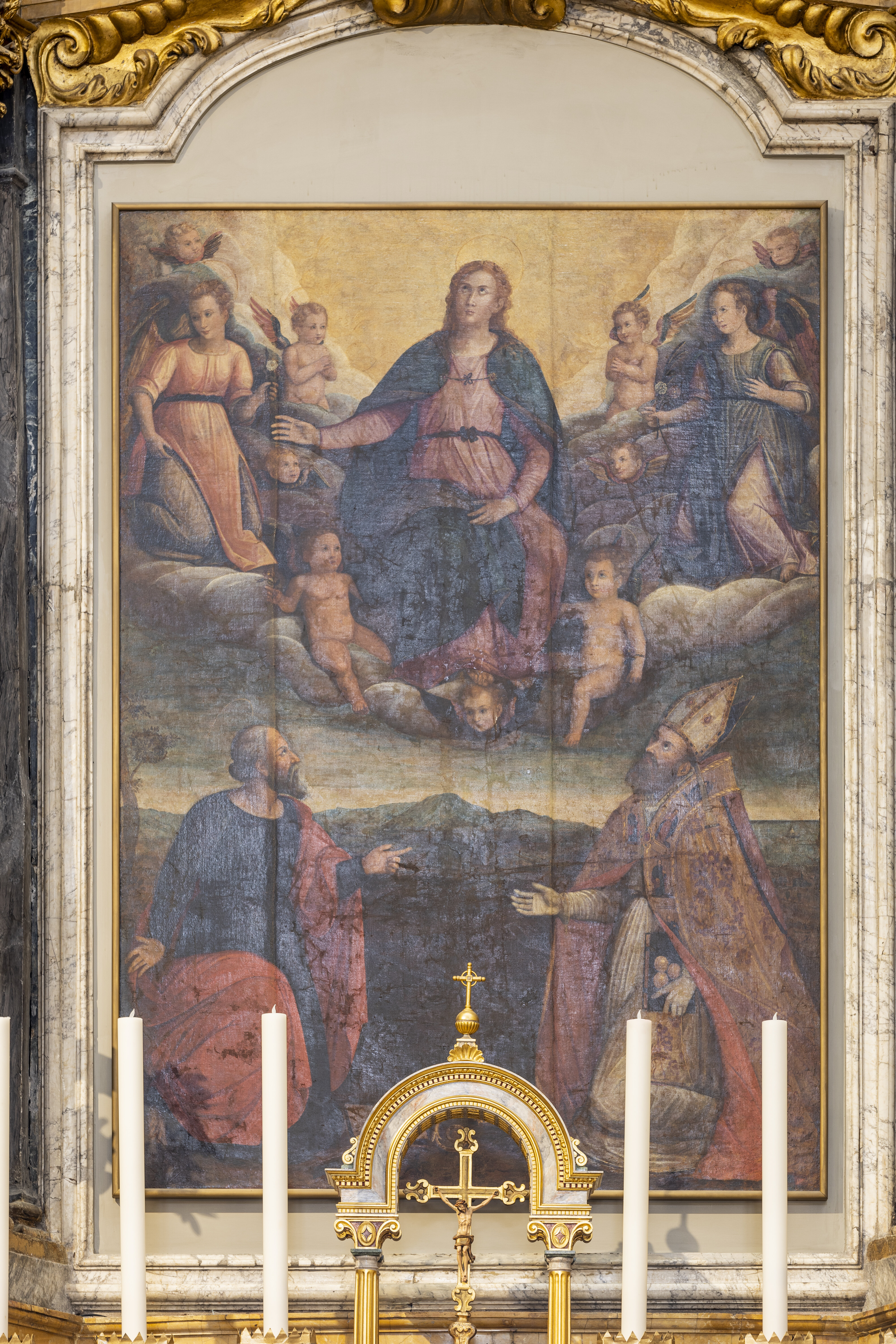
The painting, with its archaic, almost proto-Renaissance style, is a valuable example of art from Romagna in the late 1500s, a time in history when the local culture of painting was influenced by the mannerism trends from Tuscany and Emilia and by the dictates of the Counter-Reformation.
At the top of the large painting is the Virgin Mary (unusually shown without a veil), surrounded by angels and pregnant with child.
The lower part, separated by a thin layer of clouds, shows the two adoring saints: Bartholomew, with the knife with which he was martyred lying next to his leg, and Nicholas, holding a book on the spine of which there are three golden orbs, a reference to the gift that the saint made to three young girls who had no dowry.
The composition, which is schematically simple and direct, borrows the style of the Assumptions of the 1400s and early 1500s (for example the famous works of a young Raphael, such as the Oddi Altarpiece, or the Coronations of the School of Perugia), although without excelling in quality. Giordani Viroli (Viroli, 1991) attributed it to Ravenna-based painter Giovanni Barbiani (1566 - 1641), the forefather of the most active and most enduring studio of painters in the region (the final exponents of Barbiani were still active at the end of the 18th century), a widely accepted attribution, although with reservations in terms of the stylistic compatibility (Ceroni-Viroli, 1994; Gori, 2001).
The original location of the work is unknown but, as theorised by Foschi (Foschi, 1977), it may have been one of the many works transferred from Cervia Vecchia and rehoused in the religious buildings of the 18th century town. After the diocese of Cervia was merged with the Ravenna diocese in 1908, the two saints were partially repainted to become St Paternian and St Apollinaris before being restored to their original identities after restoration work at the end of the 1980s (Viroli, 1991; Ceroni-Veroni, 1994; Gori, 2001).”
